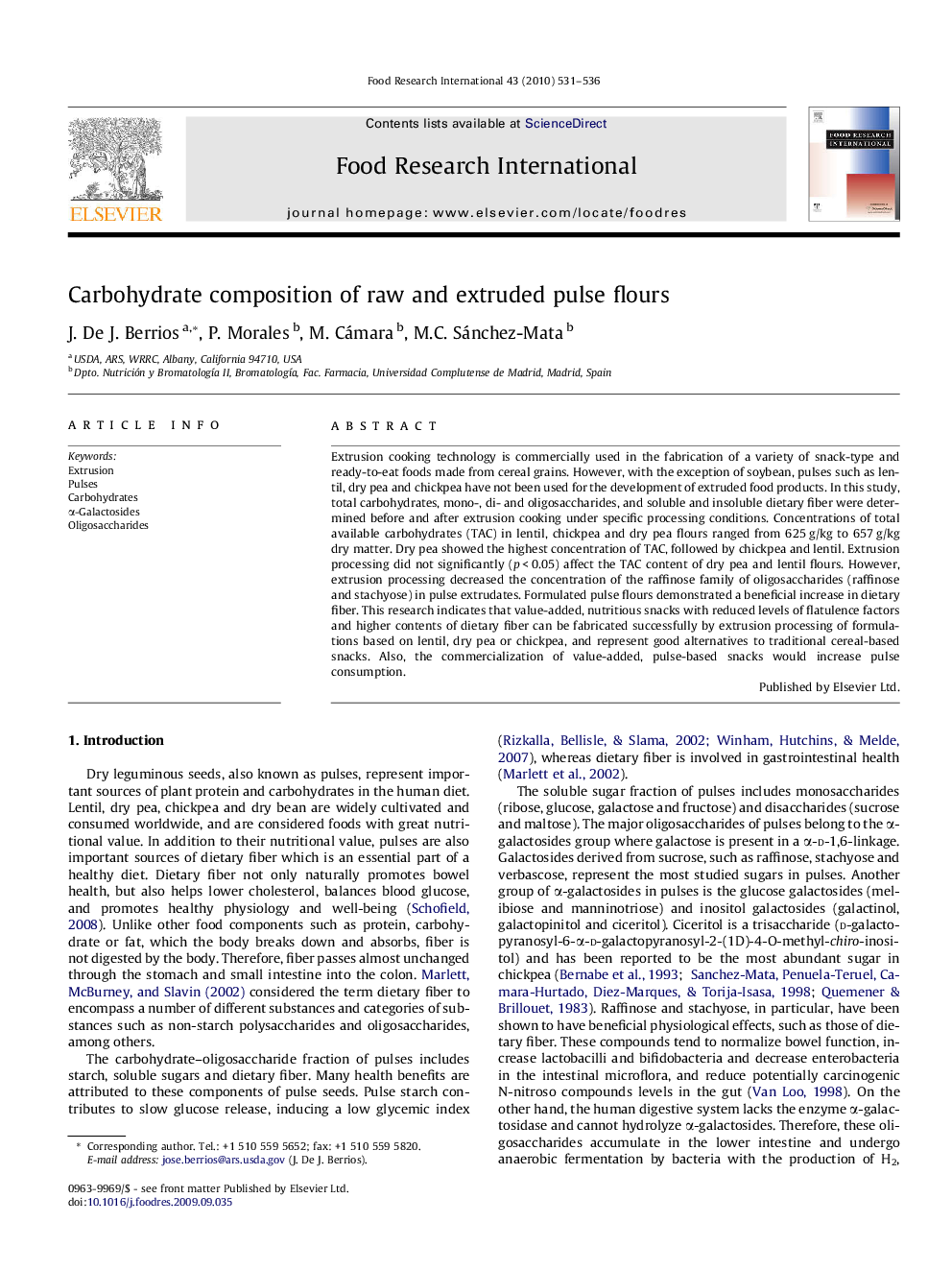| Article ID | Journal | Published Year | Pages | File Type |
|---|---|---|---|---|
| 4562738 | Food Research International | 2010 | 6 Pages |
Extrusion cooking technology is commercially used in the fabrication of a variety of snack-type and ready-to-eat foods made from cereal grains. However, with the exception of soybean, pulses such as lentil, dry pea and chickpea have not been used for the development of extruded food products. In this study, total carbohydrates, mono-, di- and oligosaccharides, and soluble and insoluble dietary fiber were determined before and after extrusion cooking under specific processing conditions. Concentrations of total available carbohydrates (TAC) in lentil, chickpea and dry pea flours ranged from 625 g/kg to 657 g/kg dry matter. Dry pea showed the highest concentration of TAC, followed by chickpea and lentil. Extrusion processing did not significantly (p < 0.05) affect the TAC content of dry pea and lentil flours. However, extrusion processing decreased the concentration of the raffinose family of oligosaccharides (raffinose and stachyose) in pulse extrudates. Formulated pulse flours demonstrated a beneficial increase in dietary fiber. This research indicates that value-added, nutritious snacks with reduced levels of flatulence factors and higher contents of dietary fiber can be fabricated successfully by extrusion processing of formulations based on lentil, dry pea or chickpea, and represent good alternatives to traditional cereal-based snacks. Also, the commercialization of value-added, pulse-based snacks would increase pulse consumption.
